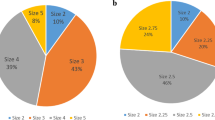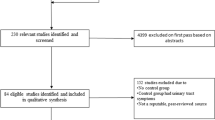Abstract
Stress urinary incontinence (SUI) is a common type of urinary incontinence adversely affecting the quality of life of women. For mild SUI, life style changes, pelvic floor exercises and medical treatment with duloxetine may help. Most patients of moderate to severe SUI usually require surgical treatment. Various surgical treatment options include Kelly’s plication, Burch colposuspension, bulking agents and sling surgeries. Although, suburethral fascial slings including the autologous rectus fascia slings were in vogue before 1990, they were overtaken by minimally invasive, faster and easier artificial midurethral slings (tension free vaginal tape and transobturator tape). However, observation of serious long-term and life changing complications of synthetic midurethral slings like mesh erosion, chronic pelvic pain and dyspareunia led to their adverse publicity and medico legal implications for the operating surgeons. This led US FDA (Food and Drug Administration) to issue a warning against their use. Currently, their use has significantly decreased in many countries, and they are no longer available in some countries. This has led to renaissance of use of natural autologous fascial sling, especially rectus fascia for surgical management of SUI. Although performing rectus fascia sling surgery is technically more challenging, takes longer, has more short-term morbidity like voiding dysfunction, their long-term success is high with very little risk of serious complications like mesh erosion, chronic pelvic pain and dyspareunia. However, multicentric trials and longer follow ups are needed before it’s routine recommendation This review discusses the role of autologous fascial sling (especially rectus fascia) for the surgical management of SUI in the current time and the need of ongoing training of this procedure to gynecology residents and urogynecology fellows.







Similar content being viewed by others
References
Sharma JB, Deoghare MK, Bhatla N, et al. A comparative study of autologous rectus fascia pubovaginal sling surgery and synthetic transobturator vaginal tape procedure in treatment of women with urodynamic stress urinary incontinence. Eur J Obstet Gynecol Reprod Biol. 2020;1(252):349–54.
Sharma JB. Urinary problems. In: Textbook of gynaecology. 1st ed. New Delhi: Avichal Publishing Company; 2018. p. 392–419.
Singh U, Agarwal P, Verma ML, et al. Prevalence and risk factors of urinary incontinence in Indian women: a hospital-based survey. Indian J Urol Soc India. 2013;29(1):31–6.
Khullar V, Sexton CC, Thompson CL, et al. The relationship between BMI and urinary incontinence subgroups: results from EpiLUTS: BMI and urinary incontinence. Neurourol Urodyn. 2014;33(4):392–9.
Nambiar AK, Lemack GE, Chapple CR, Burkhard FC. The role of urodynamics in the evaluation of urinary incontinence: the European association of urology recommendations in 2016. Eur Urol. 2017;71(4):501–3.
Agarwal A, Rathi S, Patnaik P, et al. Does preoperative urodynamic testing improve surgical outcomes in patients undergoing the transobturator tape procedure for stress urinary incontinence? a prospective randomized trial. Korean J Urol. 2014;55(12):821.
Smith A, Bevan D, Douglas HR, et al. Management of urinary incontinence in women: summary of updated NICE guidance. BMJ. 2013;347:f5170–f5170.
Faiena I, Patel N, Parihar JS, et al. Conservative management of urinary incontinence in women. Rev Urol. 2015;17(3):129–39.
Dumoulin C, Cacciari LP, Hay-Smith EJC. Pelvic floor muscle training versus no treatment, or inactive control treatments, for urinary incontinence in women. Cochrane Database Syst Rev. 2018;10:CD005654.
Herbison GP, Dean N. Weighted vaginal cones for urinary incontinence. Cochrane incontinence group, editor. Cochrane Database Syst Rev [Internet]. 2013. https://doi.org/10.1002/14651858.CD002114.pub2.
Lipp A, Shaw C, Glavind K. Mechanical devices for urinary incontinence in women. Cochrane incontinence group, editor. Cochrane Database Syst Rev [Internet]. 2014.
Lapitan MCM, Cody JD, Mashayekhi A. Open retropubic colposuspension for urinary incontinence in women. Cochrane incontinence group, editor. Cochrane Database Syst Rev [Internet]. 2017.
Kirchin V, Page T, Keegan PE, et al. Urethral injection therapy for urinary incontinence in women. Cochrane Database Syst Rev. 2017;7:CD003881.
Bayrak O, Osborn D, Reynolds WS, et al. Pubovaginal sling materials and their outcomes. Türk Ürol DergisiTurkish J Urol. 2014;40(4):233–9.
Mahdy A, Ghoniem GM. Autologous rectus fascia sling for treatment of stress urinary incontinence in women: a review of the literature. Neurourol Urodyn [Internet]. 2019.
Ghoniem GM, Rizk DEE. Renaissance of the autologous pubovaginal sling. Int Urogynecology J. 2018;29(2):177–8.
Ghoniem G, Hammett J. Female pelvic medicine and reconstructive surgery practice patterns: IUGA member survey. Int Urogynecol J. 2015;26(10):1489–94.
Nager C, Tulikangas P, Miller D, et al. Position statement on mesh midurethral slings for stress urinary incontinence. Female Pelvic Med Reconstr Surg. 2014;20(3):123–5.
Chughtai BI, Elterman DS, Vertosick E, et al. Midurethral sling is the dominant procedure for female stress urinary incontinence: analysis of case logs from certifying american urologists. Urology. 2013;82(6):1267–71.
Blaivas JG, Simma-Chiang V, Gul Z, et al. Surgery for stress urinary incontinence. Urol Clin North Am. 2019;46(1):41–52.
Khan AA, Rosenblum N, Brucker B, et al. Changes in management of stress urinary incontinence following the 2011 FDA health notification. J Clin Urol. 2017;10(5):440–8.
Bang S-L, Belal M. Autologous pubovaginal slings: back to the future or a lost art?. Res Rep Urol. 2016;11.
Chapple CR, Raz S, Brubaker L, et al. Mesh sling in an era of uncertainty: lessons learned and the way forward. Eur Urol. 2013;64(4):525–9.
RCOG statement in response to the announcement by the IMMDS review on use of surgical mesh [Internet]. Royal college of obstetricians & Gynaecologists. [cited 2019 Nov 21]. Available from: https://www.rcog.org.uk/en/news/rcog-statement-in-response-to-the-announcement-of-safety-review-of-mesh/.
Lee D, Alhalabi F, Zimmern PE. Long-term outcomes of autologous fascia lata sling for stress incontinence secondary to intrinsic sphincter deficiency in women. Urol Sci. 2017;28(3):135–8.
Khan ZA, Nambiar A, Morley R, et al. Long-term follow-up of a multicentre randomised controlled trial comparing tension-free vaginal tape, xenograft and autologous fascial slings for the treatment of stress urinary incontinence in women: long-term follow-up of TVT, pelvicoland AFS. BJU Int. 2015;115(6):968–77.
Lee D, Murray S, Bacsu CD, et al. Long-term outcomes of autologous pubovaginal fascia slings: is there a difference between primary and secondary slings?: long-term outcomes of autologous pubovaginal fascia slings. Neurourol Urodyn. 2015;34(1):18–23.
Mourad S, Elshawaf H, Ahmed M, et al. Autologous versus synthetic slings in female stress urinary incontinence: a retrospective study. Arab J Urol. 2018;16(4):397–403.
Linder BJ, Elliott DS. Autologous transobturator urethral sling placement for female stress urinary incontinence. J Urol. 2015;193(3):991–6.
Preece PD, Chan G, O’Connell HE, et al. Optimising the tension of an autologous fascia pubovaginal sling to minimize retentive complications. Neurourol Urodyn. 2019;38(5):1409–16.
Al-Azzawi IS. The first Iraqi experience with the rectus fascia sling and transobturator tape for female stress incontinence: a randomised trial. Arab J Urol. 2014;12(3):204–8.
Plagakis S, Tse V. The autologous pubovaginal fascial sling: an update in 2019. LUTS Low Urin Tract Symptoms. 2020;12(1):2–7.
Petrou SP, Davidiuk AJ, Rawal B, et al. Salvage autologous fascial sling after failed synthetic midurethral sling: greater than 3-year outcomes. Int J Urol. 2016;23(2):178–81.
Milose JC, Sharp KM, He C, et al. Success of autologous pubovaginal sling after failed synthetic midurethral sling. J Urol. 2015;193(3):916–20.
Fusco F, Abdel-Fattah M, Chapple CR, et al. Updated systematic review and meta-analysis of the comparative data on colposuspensions, pubovaginal slings, and midurethral tapes in the surgical treatment of female stress urinary incontinence. Eur Urol. 2017;72(4):567–91.
Rehman H, Bezerra CA, et al. Traditional suburethral sling operations for urinary incontinence in women. Cochrane incontinence group, editor. Cochrane Database Syst Rev [Internet]. 2017. https://doi.org/10.1002/14651858.CD001754.pub4.
Osman NI, Hillary CJ, Mangera A, et al. The midurethral fascial “sling on a string”: an alternative to midurethral synthetic tapes in the era of mesh complications. Eur Urol. 2018;74(2):191–6.
Schimpf MO, Rahn DD, Wheeler TL, et al. Sling surgery for stress urinary incontinence in women: a systematic review and metaanalysis. Am J Obstet Gynecol. 2014;211(1):71.e1-71.e27.
Clifton MM, Linder BJ, Lightner DJ, et al. Risk of repeat anti-incontinence surgery following sling release: a review of 93 cases. J Urol. 2014;191(3):710–4.
Shah K, Nikolavsky D, Gilsdorf D, et al. Surgical management of lower urinary mesh perforation after mid-urethral polypropylene mesh sling: mesh excision, urinary tract reconstruction and concomitant pubovaginal sling with autologous rectus fascia. Int Urogynecology J. 2013;24(12):2111–7.
McCoy O, Vaughan T, Nickles SW, et al. Outcomes of autologous fascia pubovaginal sling for patients with transvaginal mesh related complications requiring mesh removal. J Urol. 2016;196(2):484–9.
Gammie A, Kirschner-Hermanns R, Rademakers K. Evaluation of obstructed voiding in the female: how close are we to a definition? Curr Opin Urol. 2015;25(4):292–5.
Wein AJ. Re: evaluation of obstructed voiding in the female: how close are we to a definition? J Urol. 2016;195:1041–1041.
Aponte MM, Shah SR, Hickling D, et al. Urodynamics for clinically suspected obstruction after anti-incontinence surgery in women. J Urol. 2013;190(2):598–602.
Author information
Authors and Affiliations
Corresponding author
Ethics declarations
Conflict of interest
The authors declare that they have no conflict of interest.
Additional information
Publisher's Note
Springer Nature remains neutral with regard to jurisdictional claims in published maps and institutional affiliations.
J B Sharma is a Professor in the Department of Obstetrics, Gynecology and Urogynecology, All India Institute of Medical Sciences, Ansari Nagar, New Delhi 110029, India. Karishma Thariani is a Fellow, Urogynecology in the Department of Obstetrics, Gynecology and Urogynecology, All India Institute of Medical Sciences, Ansari Nagar, New Delhi 110029, India. Manasi Deoghare is a Resident in the Department of Obstetrics, Gynecology and Urogynecology, All India Institute of Medical Sciences, Ansari Nagar, New Delhi 110029, India. Rajesh Kumari is an Associate Professor in the Department of Obstetrics, Gynecology and Urogynecology, All India Institute of Medical Sciences, Ansari Nagar, New Delhi 110029, India.
Rights and permissions
About this article
Cite this article
Sharma, J.B., Thariani, K., Deoghare, M. et al. Autologous Fascial Slings for Surgical Management of Stress Urinary Incontinence: A Come Back. J Obstet Gynecol India 71, 106–114 (2021). https://doi.org/10.1007/s13224-020-01408-3
Received:
Accepted:
Published:
Issue Date:
DOI: https://doi.org/10.1007/s13224-020-01408-3




